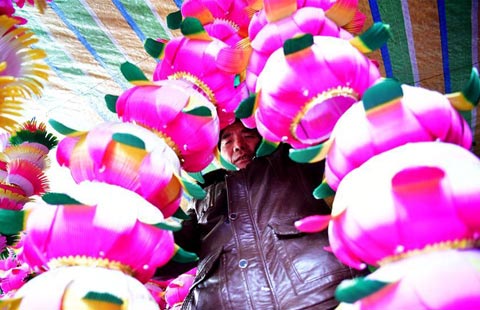Chocoholics in China lean towards western brands
 |
|
A staff of a candy store displays a box of rose shaped chocolate on February 12, 2017 in Shenyang, Liaoning province. [Photo/VCG] |
Domestically made chocolates have suffered a crushing defeat against foreign brands ahead of the Valentine's season, a business newspaper found.
According the National Business Daily, domestic brands were seldom seen on display shelves when a reporter visited several supermarkets in Beijing.
Zhu Danpeng, a researcher at the China Brand Research Institute, said most domestic brands are waiting for foreign brands to step into the market and educate consumers then reap the spoils by simply copying what they do.
Zhu also noted that, China-made chocolate once almost lost self-owned brands, after the country's most popular domestic brand, Le Conte, suffered market share slumps in recent years and even temporarily shut down for new buyout last April.
"Although chocolates shaped by domestic makers as gold bars, gold coins or any other characters that are popular among Chinese customers raised a certain (portion) of market share during the Chinese New Year period, deficiency of brand awareness still resist domestic brands' business expansions in the first and second tier cities," said Zhu.
"Most of the domestic brands have to slip into tier-three or tier-four cities to overcome market share losses by competing with western brands," Zhu added.
Online sales for domestic vendors also remain dim as most e-shoppers are keen on purchasing well-known western brands with more favorable reputations.
Statistics of China Merchants Securities said that the brand Ferrero Rocher stood out from the crowd, which accounted for 17.8 percent of the market share. Other leading brands, such as Dove chocolate, M&M and Snickers, reached 39.8 percent in total.
In addition to sluggish sales, fake commodities in the sector have also continued to damage the growth of domestic brands.
Domestic brands who have achieved a position in the low-end market may develop more authorized cartoon-featured products to solve certain rigid demands in third and fourth tier cities and the rural market, according to Zhu.























